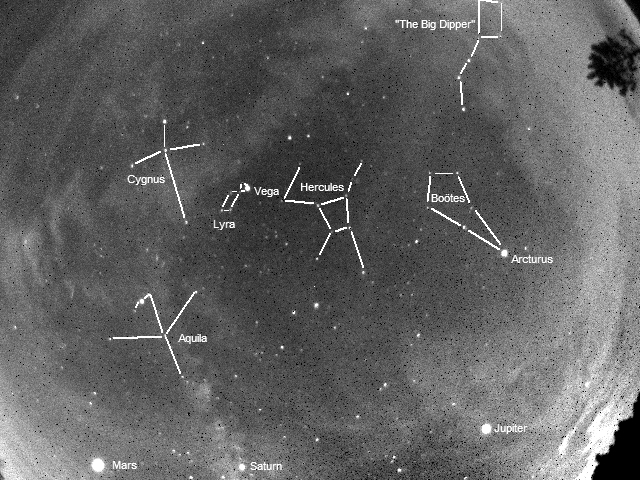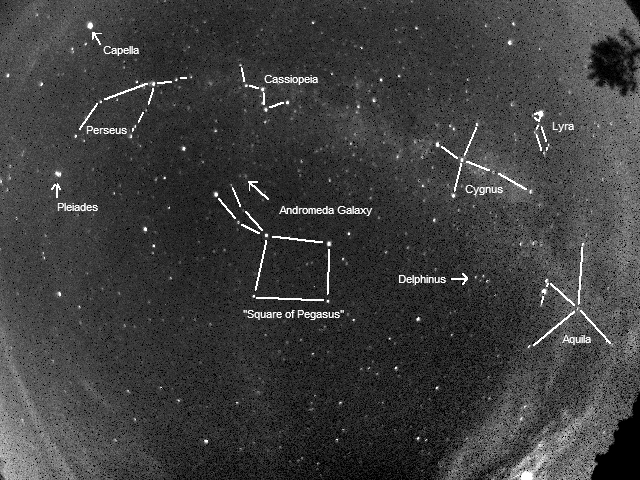The 2018 Perseid meteor shower was the perfect opportunity to test my equipment and procedures for full sky imaging. I had previously set up the camera in my backyard but the trees severely limit my FOV and the light from the base keeps the sky pretty bright. The Munson observing site the EAAA shares with the NWFAA would have neither of those limitations and the addition of the meteors would provide a more accurate evaluation of the camera sensitivity.
I started the run at 2046 (L). I’ve annotated a copy of the first still image to show the 3 classical planets that were visible along the southern horizon. Venus had already set below the western tree line. The lens I currently use for the all sky view is designed for a 1/2″ sensor camera. My camera has only a 1/4″ sensor which is apparent by the cut-off Big Dipper. A sizeable portion of the sky is not visible due to the lens/sensor mismatch. North is at the top of each picture.
The evening started with some high clouds but ended up fairly clear. Along with several meteors there were a lot of aircraft. My personal meteor count was 69 but that included several meteors that were not Perseids. Meteors not aligned with any known shower are called sporadic meteors.
This is an assembly of 2,251 10 second images taken on the evening of the 12th of August and morning of the 13th. The images are played at 0.1 seconds per frame. A quicker video (0.03 sec/frame) is on the Facebook page.
After several hours of Earth’s rotation, additional constellations and objects were visible. Of note is the constellation Perseus (the namesake of the meteor shower) and the Andromeda galaxy just visible as a smudge on the night sky. Although I have viewed the Andromeda galaxy naked eye before, Monday morning was the most prominent that I have ever seen due to Munson’s lower light pollution.
Lessons learned from this outing:
- Extend exposure time to at least 20 seconds to increase the signal to noise ratio. That will also half the number of exposures I have to process.
- Look for a 1/2″ sensor camera to avoid wasting FOV.
- Look for a more sophisticated dark frame algorithm (note the peppered appearance of the clouds early in the video.

